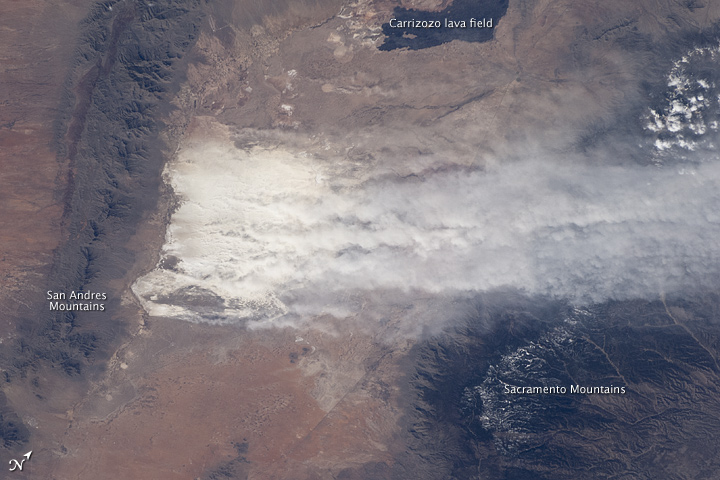
Winds Blowing White Sands Spotted from Space

New Mexico's glistening white gypsum dunes, which cover 275 square miles (712 square kilometers), are the largest gypsum dune fields on the planet.
The snow-white sands are easily spotted from space; astronauts could see the dune fields on their way to the moon. This photograph was snapped by an astronaut aboard the International Space Station on Feb. 28, 2012.
Here, winds have lifted vast plumes of the rare, white mineral into the air, sending them more than 70 miles (112 km) eastward, stretching in white clouds out over the Sacramento Mountains, which are dappled with snow.
On this day in late February, the winds were brisk enough to whip the gypsum to heights of nearly 4,000 feet (1,200 meters).
White Sands National Monument was established in 1933. It lies about 14 miles (22 km) west of Almagordo, New Mexico. About 40 percent of the dunes are in the park, the rest is off limits and belongs to the United States military.
The pure gypsum (hydrous calcium sulfate) that forms the unusual dunes is left behind as a seasonal lake, which contains water with a very high mineral content, evaporates.
Giant gypsum crystals have been discovered deep in the Earth. Some of the bone-white crystals are the size of houses and trucks.
Sign up for the Live Science daily newsletter now
Get the world’s most fascinating discoveries delivered straight to your inbox.
Follow OurAmazingPlanet for the latest in Earth science and exploration news on Twitter @OAPlanet and on Facebook.











